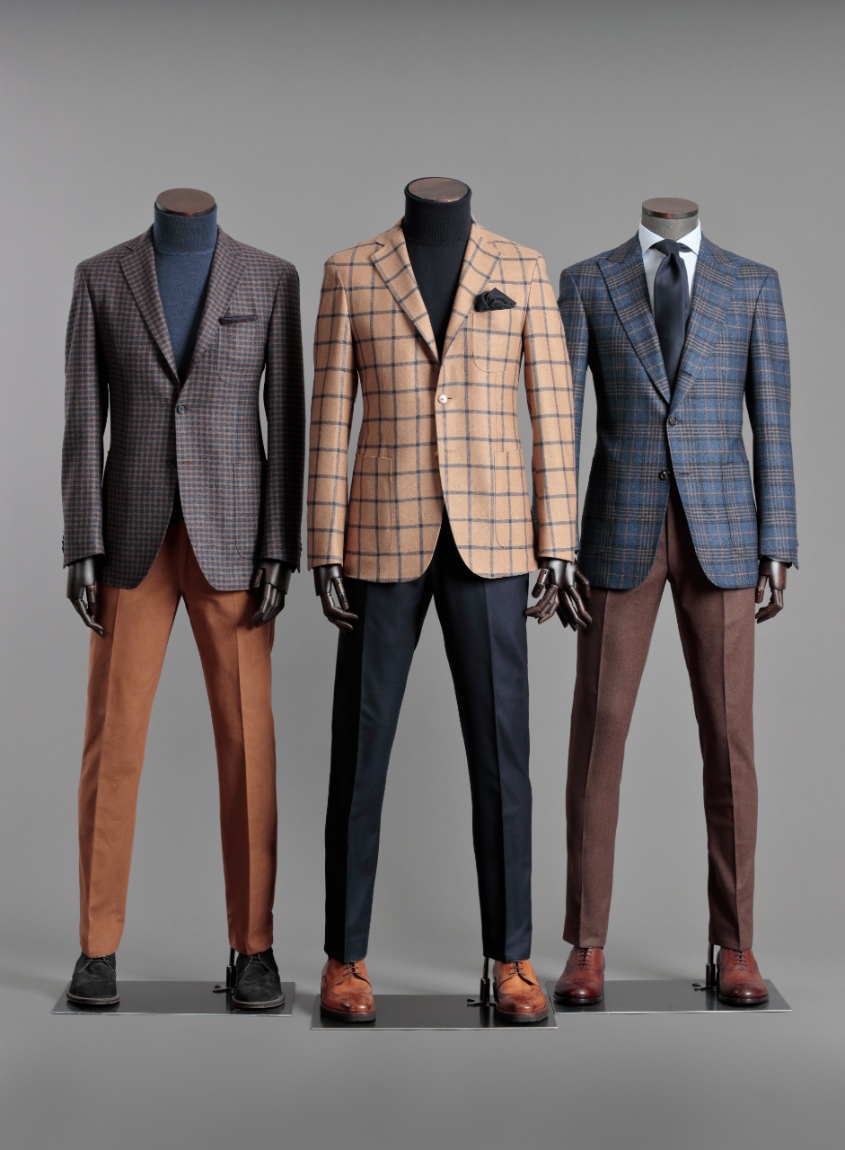One reason men shy away from showing interest in tailored clothing is because, similar to other finer pleasures like cigars or art, there can be a current of pretentiousness. Though we at the shop reject any such pretense around clothing, society reinforces it by way of insider-y jargon and esoteric rules. The difference between suit jackets, sport coats, and blazers is a common offender.
With that, we’ve prepared this post. We hope it clears up some confusion.
Men’s Suit Jackets
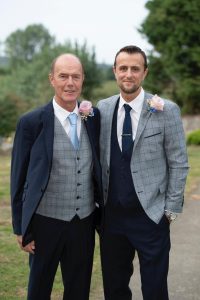 We’ll start our discussion with the suit jacket. The defining characteristic of a suit jacket is that it’s part of a suit. That’s it. Manufactured with a matching pair of trousers in the same color, fabrication, and weight, it may have a vest or even an additional pair of pants to go with it.
We’ll start our discussion with the suit jacket. The defining characteristic of a suit jacket is that it’s part of a suit. That’s it. Manufactured with a matching pair of trousers in the same color, fabrication, and weight, it may have a vest or even an additional pair of pants to go with it.
In the made-to-measure and custom world, you can theoretically make a suit out of any material and in any color. Whether it’s a good idea or not to make a suit out of, say, bright yellow lambswool is beyond the scope of this blog post. Just know that the industry makes worsted wool in weights ranging from about seven ounces up to about twelve ounces. You can learn more about fabric weights and their properties here.
Still, you can find suits in cotton, linen, cashmere, bamboo, and plenty of other materials. Worsted wool is simply the most common textile.
Suit jackets are available in single- and double-breasted models, with side or center vents, and with either notch or peak lapels. We’ll address what’s correct versus what isn’t later in this section.
Suit History
The word “suit” comes from the French verb suite, which means “to follow.” Suits as we know them have been around in some form since the late 19th century. Though we now wear them mostly as business attire, the original term for the garment was actually “lounge suit.” This is because men wore striped trousers and solid morning coats for business, but would change into a lounge suit when relaxing at home.
For a society in which “athleisure” is an increasingly popular category of clothing, this seems preposterous, we know. But it’s the truth.
How To Wear A Suit Jacket
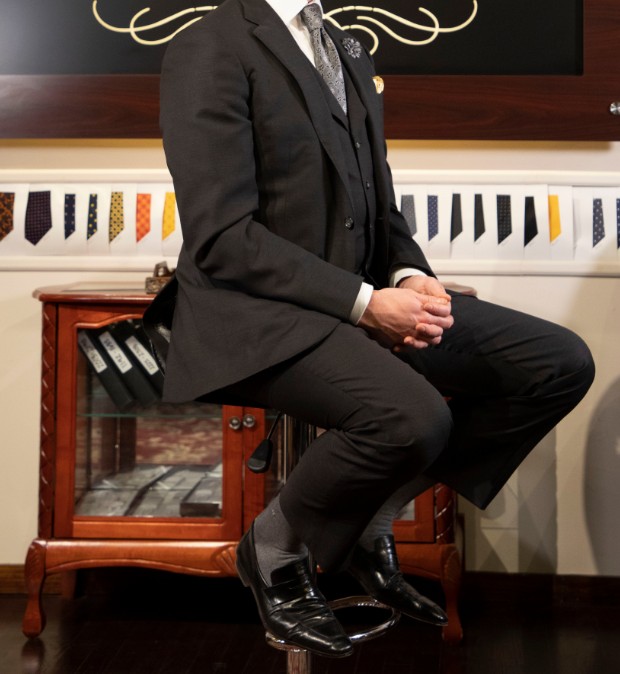
There are two ways to wear your suit jacket: with its matching pants, or with differently-colored pants of a similar fabrication and weight, which effectively turns it into a sport jacket. More on sport jackets later in this post. A navy suit jacket with medium grey pants is a perfect example of the sport coat-ification of a suit jacket. This versatility is one reason that men building the foundations of their professional wardrobe should start with a solid navy suit and a solid grey suit. Explore more about wardrobe building here.
It is generally not advisable to pair a suit jacket with jeans or chinos. This is what sport coats are for.
As mentioned above, suits are widely available in various models. For the past ten to fifteen years continuing through today, the most common suits are two-button single-breasted models with notch lapels, side vents, and four buttons on each sleeve.
Still, “correct” suit jackets are available in three-button models, double-breasted models, with peak lapels, and various front pocket styles, such as ticket pockets. Whether it’s advantageous or not to wear one of these models is for you and your image consultant to determine.
Blazers
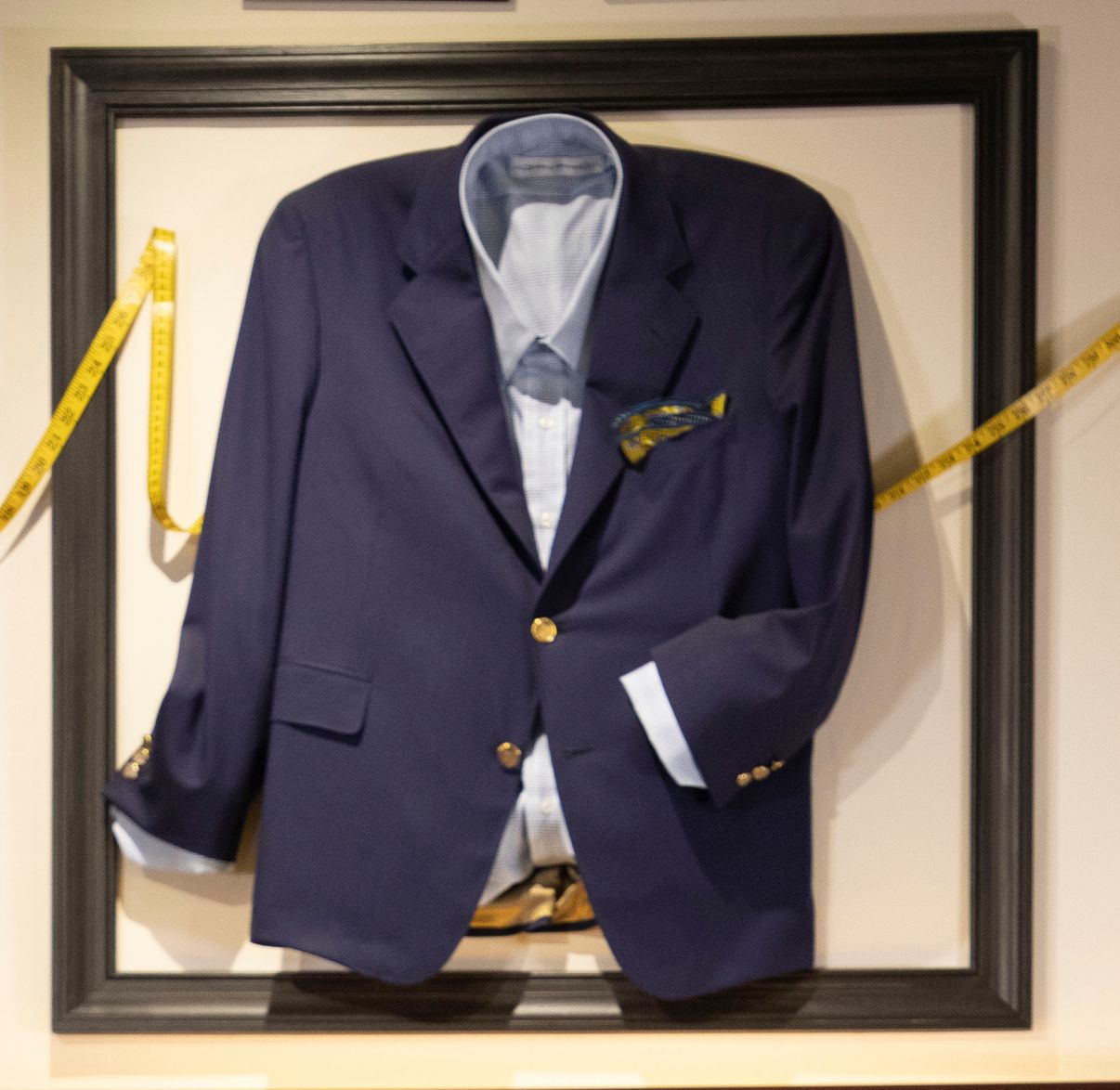
The modern blazer is a just solid-colored tailored jacket with metal buttons sewn to the jacket via a shank instead of standard “sew-through” buttons made of horn, mother-of-pearl, or plastic. This allows you to remove the buttons before dry cleaning, a practice still common for modern military dress uniforms.
The buttons can be various types of metal such as brass, pewter, gold, or sterling silver. Sold as solids or engraved with any design imaginable – fraternal organizations, alma maters, professional and personal interest symbols, and family crests – there’s something for everyone. The use of metal buttons with a shank is the most important defining feature of a blazer.
The classic “correct” blazer is solid navy blue with a 6×2 double-breasted stance. It has side vents, peak lapels, and gold buttons throughout – six on the front and four on each sleeve. Plenty of variants exist, the most common if which is a solid navy two-button single-breasted model.
Blazer History
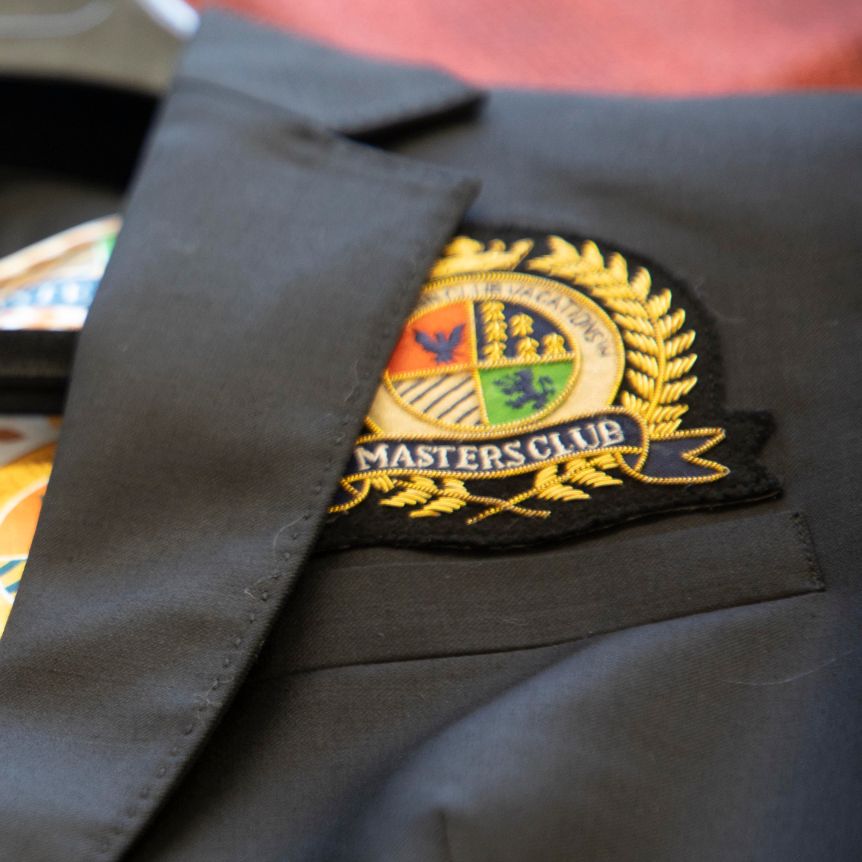
One commonly discussed origin story of the blazer is that the captain of the British Navy’s HMS Blazer dressed his men in dark blue double-breasted jackets to impress Queen Victoria during an official visit. She liked it, and the term “blazer” stuck.
The HMS Blazer had seven captains over its lifetime, and it’s the third one who’s credited with the blazer’s creation around 1845. However, The Royal Navy had outfitted sailors in “reefer jackets” for about twenty years up to that point. The reefer jacket – also a forerunner to the modern pea coat – was a short, blue, double-breasted coat that essentially whose buttons were replaced with gold ones.
A prototype for the style? Yes. The etymological source for the term blazer? Somewhat counterintuitively, no.
The true origin story also comes from 19th-century England, but from the civilian side. University rowing crews traditionally wore dark, flannel coats. A crew at St. John’s College, Cambridge called the Lady Margaret Boat Club decided to start decking themselves out in bright crimson ones instead. They ignited a trend, and the last decade of the 1800’s had British rowers dressing in wildly colored, boldly striped jackets that one could only have custom made today: baby blue and white, black and purple, red and orange, midnight blue, bright pink, and cream.
The term “blazer” was born after these jackets due to their association with their “blaze” of color. This is where the name comes from. While the style of blazer we wear today makes up a crucial component of a tailored wardrobe due to its versatility, classic “boating blazers” in the brightest solids or the most eye-catching of stripes are available at custom men’s shops (and we’d be happy to answer any questions you have, of course).
How To Wear A Blazer
A blazer is one of the most versatile pieces of tailored clothing a man can own. The classic navy model can be paired with trousers in various shades of grey, cream, taupe, tan, and olive, then finished off with a shirt and tie (or, if you dare, an ascot) for a dressed-up-but-still-casual look. Andy Warhol made them famous when paired with jeans with a navy blazer. Throwing one on with a pair of well-fitted chinos, boat shoes, and a polo is almost a caricature of preppy dress – though we admit that it’s a hell of a summer look.
Lots of men – many of whom tend to be under sixty – eschew blazers. Something about the metal buttons turns them off. Still, we encourage men of all ages to give the (well-constructed and properly fitted) blazer a chance.
Sport Coats
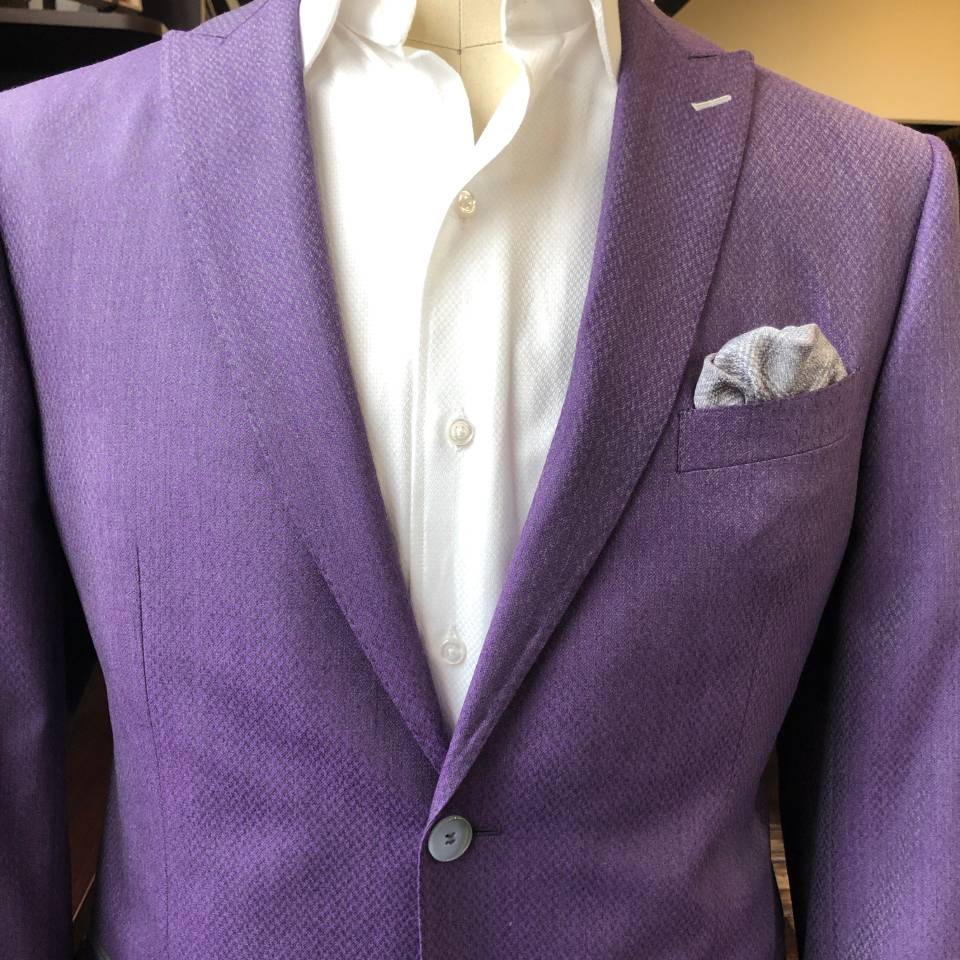
Lastly, we come to sport coats, or sport jackets. A sport jacket is a tailored jacket without matching garments, such as pants. It’s typical to hear sport coats referred to as blazers; this is incorrect. Technically, every blazer is a sport coat, but not every sport coat is a blazer. This is a an example of where knowing the difference between suits, sport coats, and blazers will save you a lot of time looking for the wrong thing.
Sport coats are a more casual garment than a suit jacket or blazer. One can wear it with a tie, but it truly shines when dressed down. Though rare today, sport coats are also available with details that suits and blazers typically lack. Bi-swing backs, belts, elbow patches, and throat latches are sport coat-specific details.
Due to their casual nature, sport coats are available in a wider variety of fabric types and colors than most suits. While solid-colored sport coats are perfectly common, bold plaids in colorways like forest green with burgundy, tan with marine blue, and lavender on steel grey can be found in most well dressed men’s closets.
Sport coat details can range from quiet (patch pockets, notch lapels, unstructured make) to loud (peak lapels, slanted ticket pockets, contrast pic stitching) and everything in between.
The world of fabric opens wide when talking about sport jackets. Worsted wool is of course popular, but flannels, cashmeres, silk, linen, and cotton are all common in modern sport coats.
Sport coats have been popular with men for decades, and they continuing that trend today. In recent years, we’ve noticed ourselves making a higher proportion of sport coats rather than suits for our clients. Most likely a bi-product of casualisation of the work place. A sport coat is a perfect way to dress up without looking out of place in a more relaxed settings.
If we wear them when we want to look smart – that is, not when we’re playing sports – then why are they called “sport jackets?”
History of the Sport Coat
For this explanation to make sense, we have to dispense with our idea of “sports” as we know it. The term “sport jacket” comes from the outdoor sporting traditions of the late-19th-to-early-20th century British aristocracy. Horseback riding, fox hunting, and shooting all come to mind.
Consistently cold, rainy weather required hearty clothing, so most sport jackets at the time were extremely heavy. Tailors would make them in short-staple wools that gave them a fuzzy, rough handle. Though not luxurious to the touch, they were smart and they kept the wearer warm and dry. They could also accommodate a flask and extra ammunition.
One of the earliest known sport coats is a “Norfolk jacket”. Featuring a pleated back and a full or half-belt, it expanded so the wearer could fire a shotgun. Custom versions are available with these details, but many look like suit jackets having more fun than their business-y cousins.
How To Wear Sport Jackets
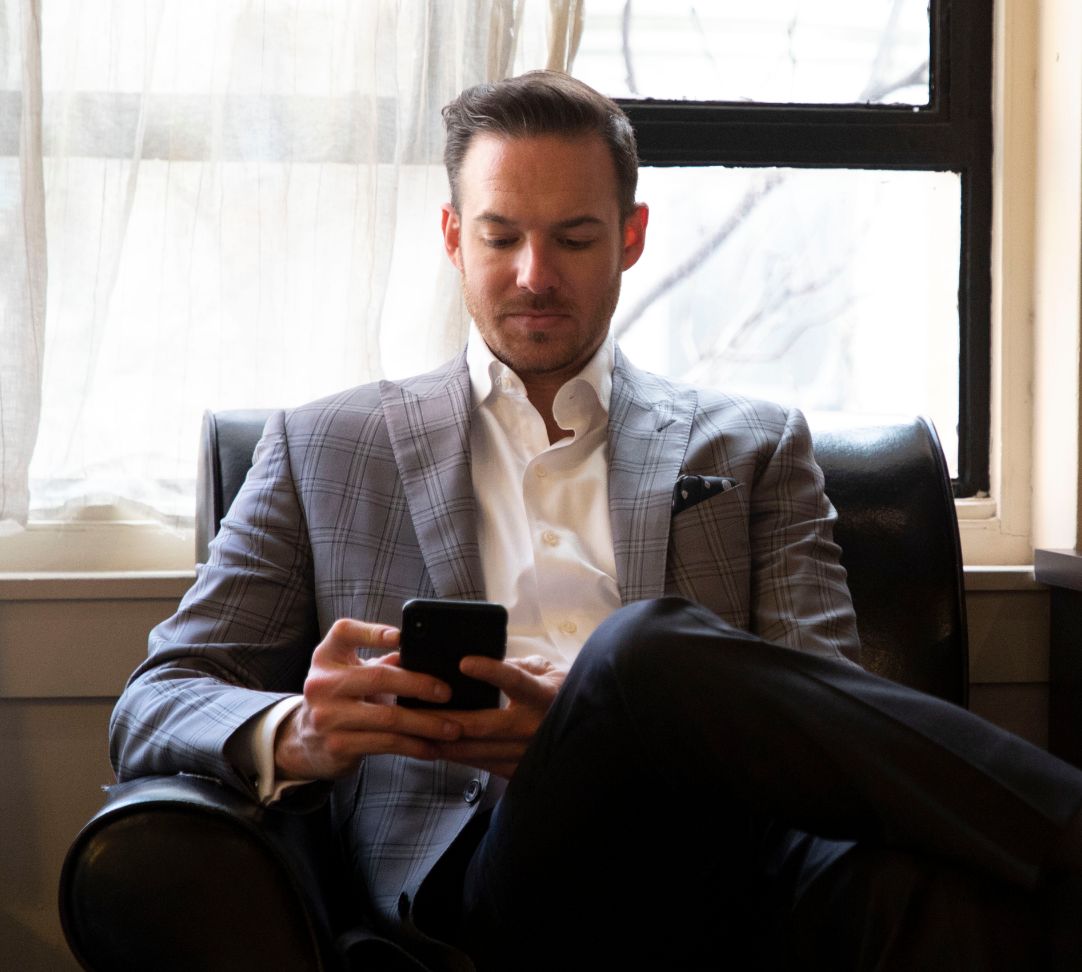
The key to successfully wearing sport jackets is to have versatile pants and shirts in your closet to complement them. A few pairs in solid dark blue, mid grey, tan, or chocolate will work with many different sport jackets. If you need help working with colors (and lots of men do), explore more here.
A modern classic look it to pair a sport jacket with dark jeans and a white dress shirt. The result is effortless style, assuming everything fits well.
In Conclusion
Knowing the difference between suits, sport coats, and blazers will enable you to put forth your most impactful image. If you need help parsing through that aspect of your life, the image consultants at Henry A. Davidsen are here to help. Send us a note at info@henrydavidsen.com or call 215-253-5905 to start managing your image.
